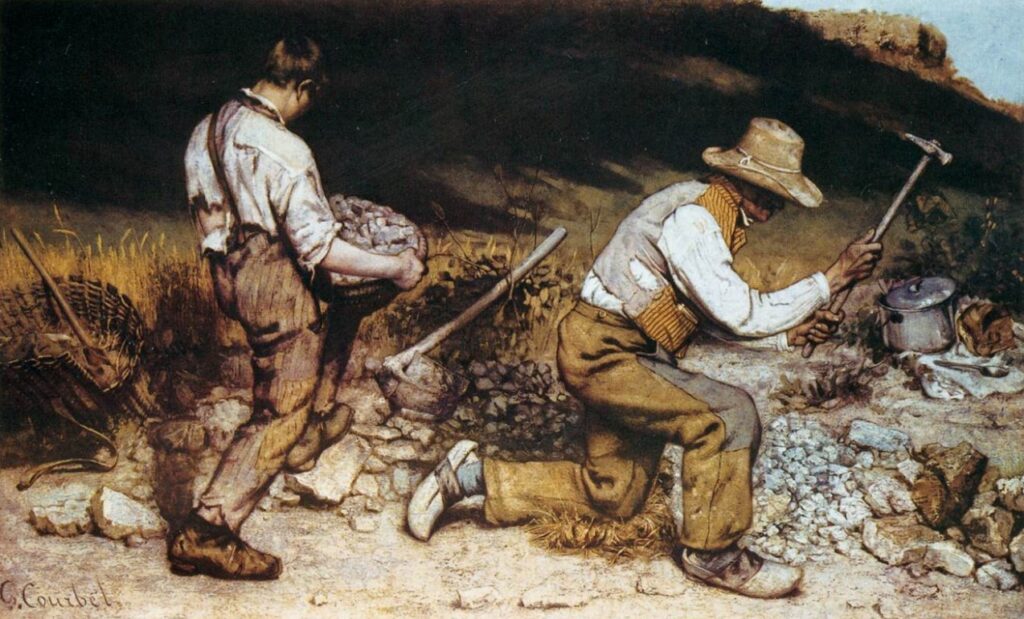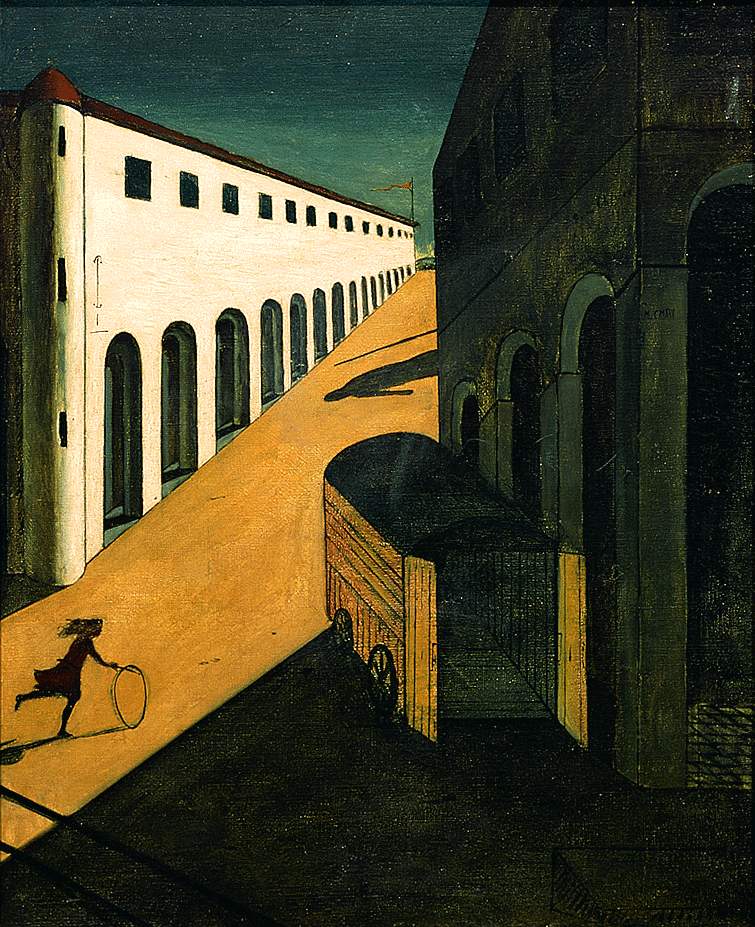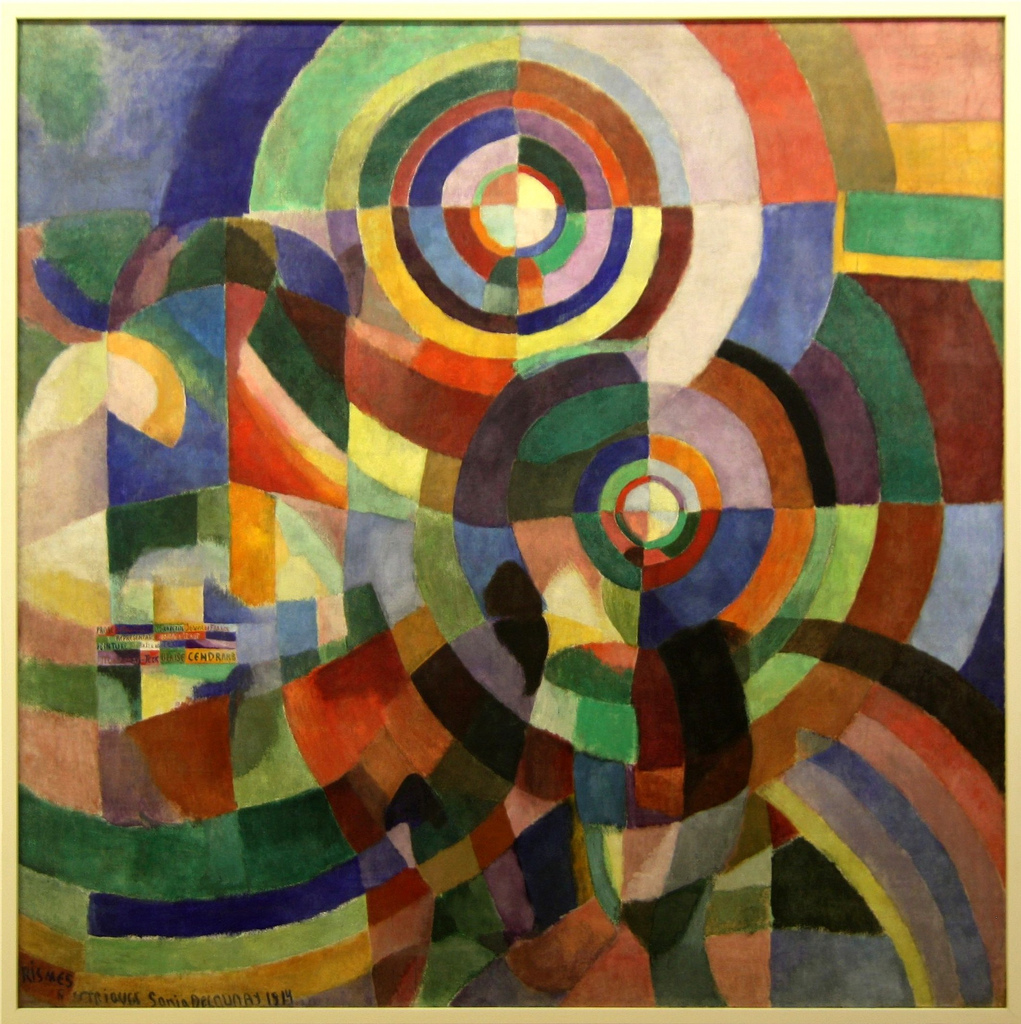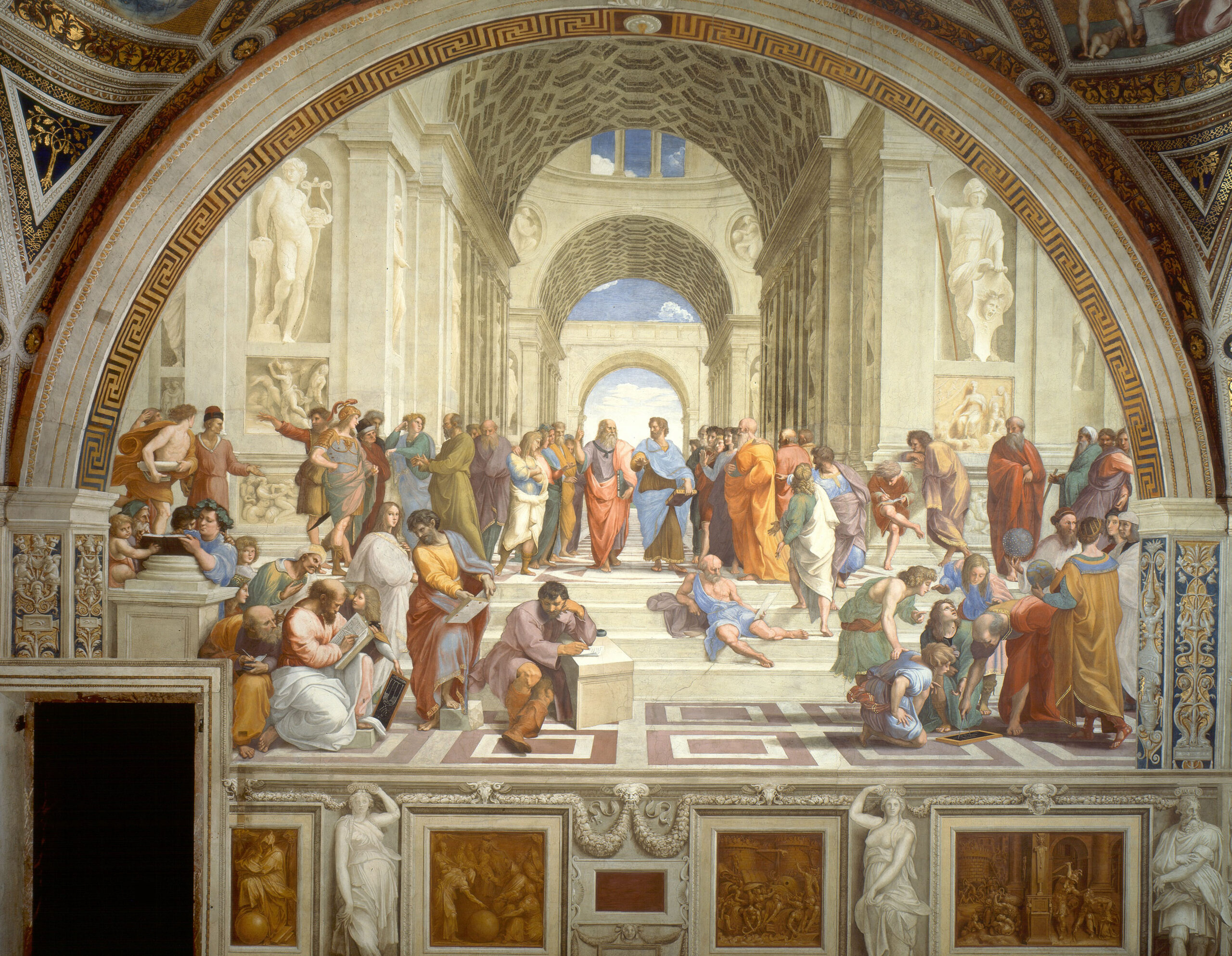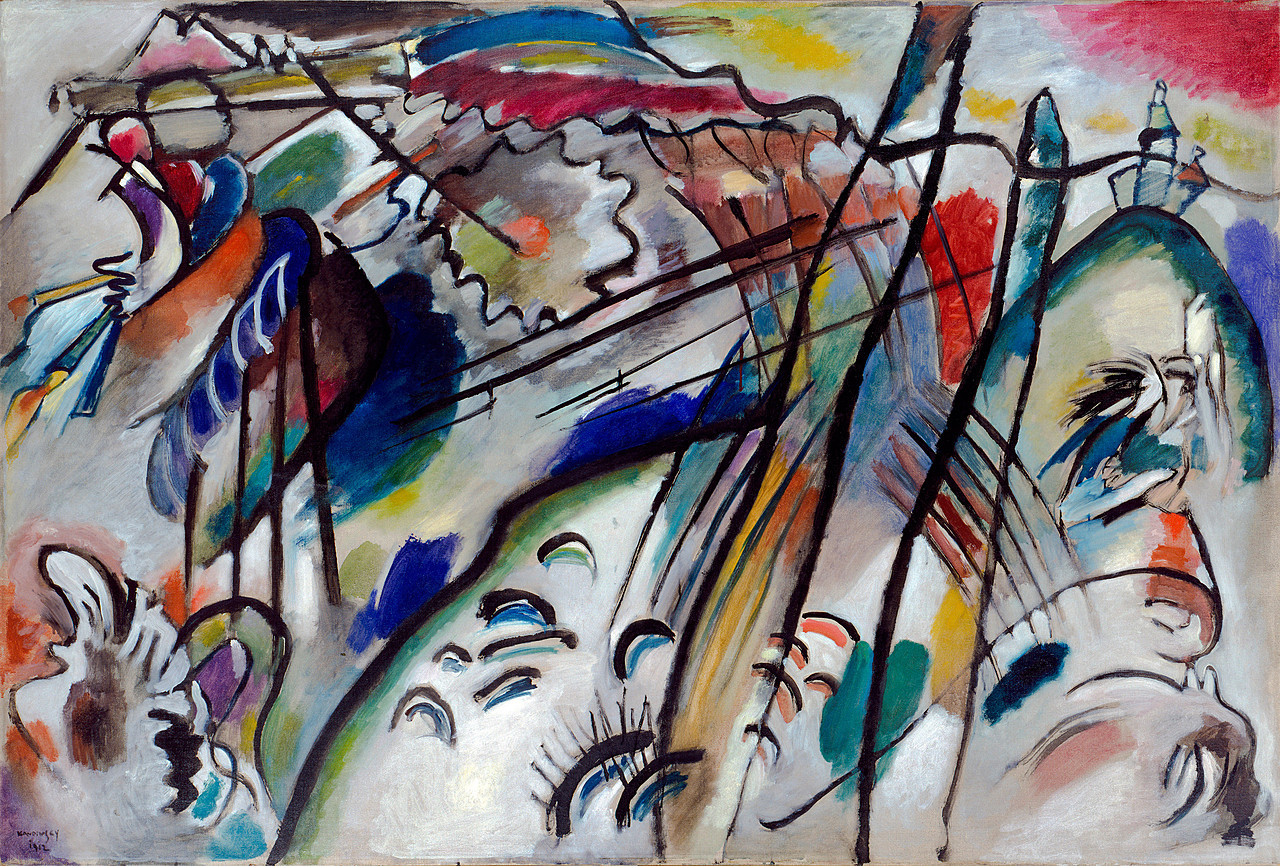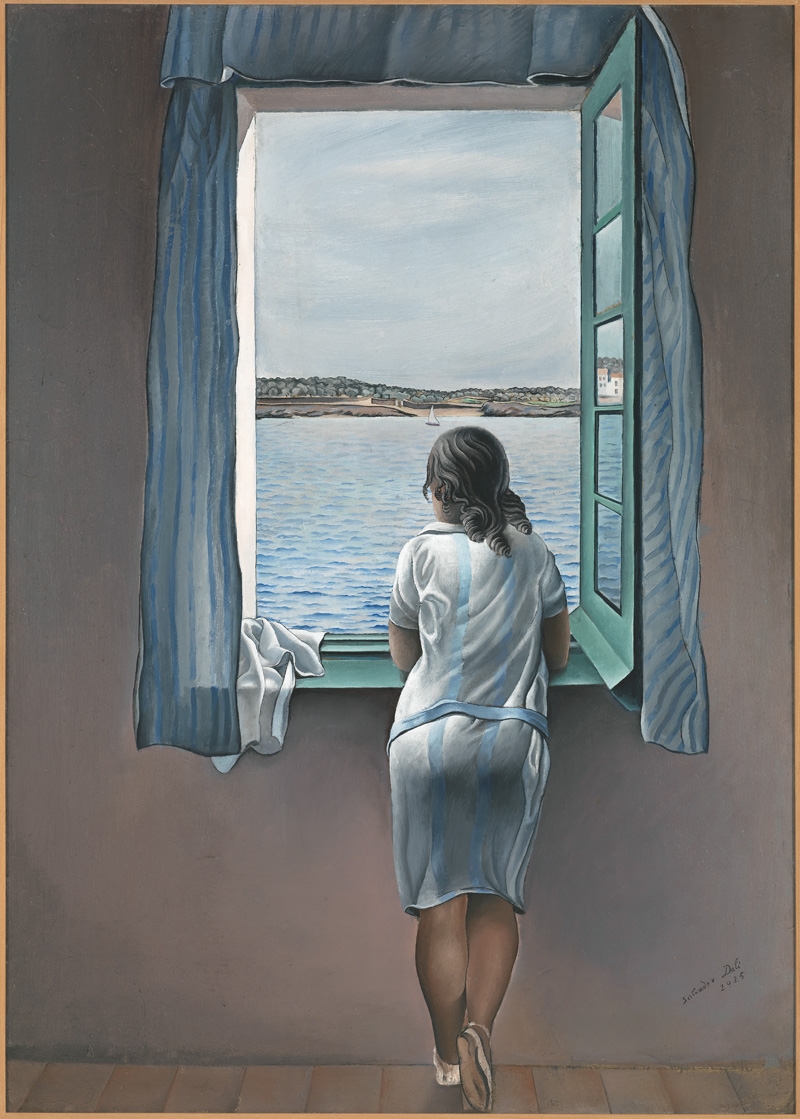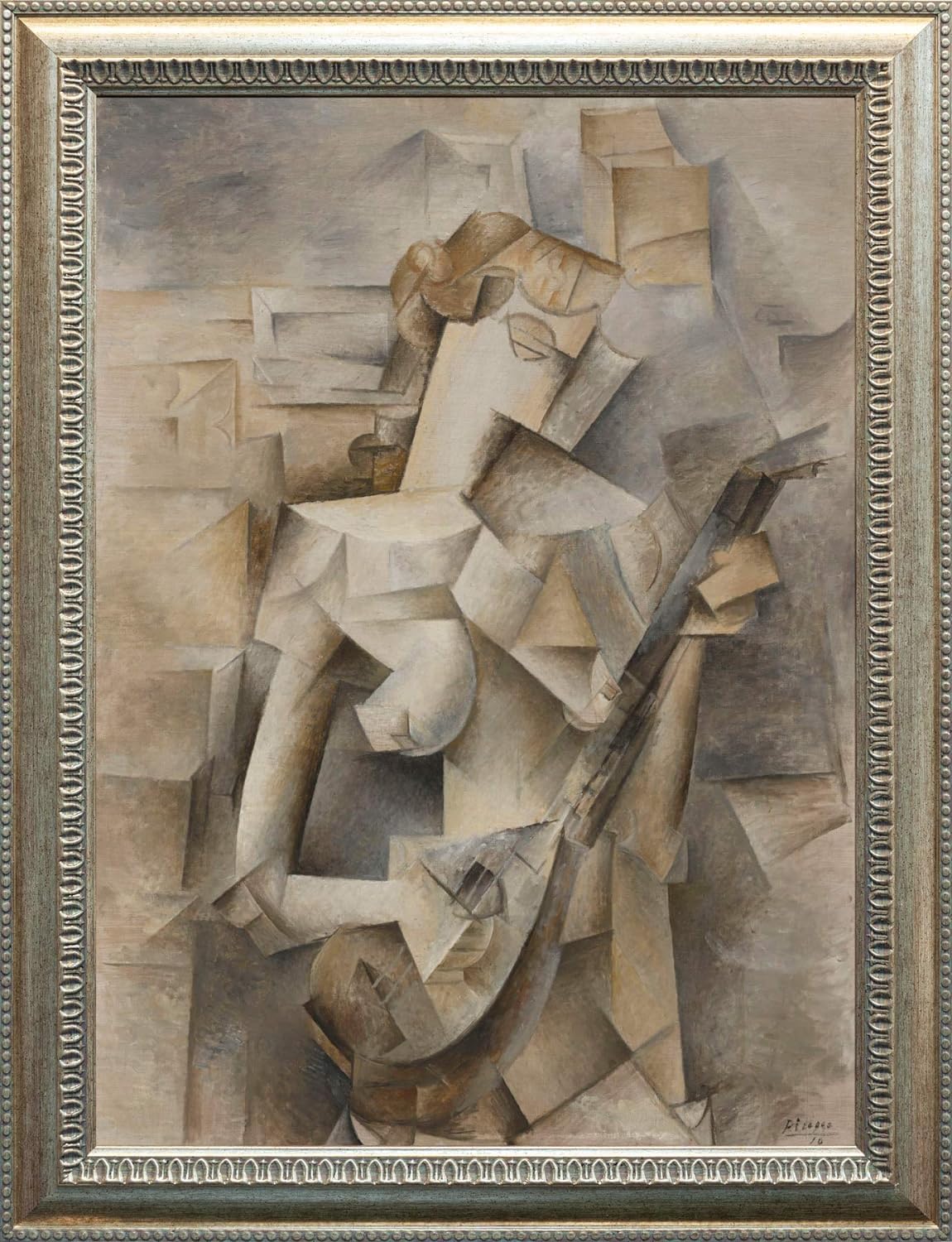In 1849, Gustave Courbet brought to life «The Stonebreakers,» a painting that captures the harsh reality of the poor in 19th century France. Set at the time of Karl Marx and Friedrich’s influential «Communist Manifesto,» this work serves as a window into the social struggles of the time.
In this article, we explore Courbet’s monumental creation in depth, immersing ourselves in its analysis and historical context. A fascinating journey through the artist’s vision and the tumultuous social reality that inspired his brush.
History The Stonebreakers Painting by Gustave Courbet
Getting to know the artist behind «The Stonebreakers»
The Political Paradox
Courbet, despite provoking political accusations, called himself a «Republican by birth», his political life was not without contradictions. Although he did not participate in the Revolution of 1848, he played an active role in the Paris Commune of 1871, which led to his imprisonment.
«His arrogance, evident, was mixed with his commitment to realism«.
Portraying Authenticity
A leader of the realist movement, he focused on portraying everyday people and places of daily life. His intention was to represent the French people as a political entity, showing their commitment.
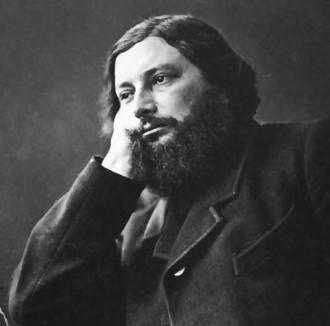
The Moment of Inspiration «The Stonebreakers»
Courbet, in a letter to his friends Champfleury and Francis Wey, explains the revelatory moment that triggered the creation of his iconic painting «The stonebreakers».
According to the letter:
While on his way to the castle of Saint-Denis to paint a landscape, he stopped near Maisières and was astonished by the sight of two people breaking stones on the road.
The shocking expression of poverty she witnessed made her the muse she needed. The connection with the workers was so profound that Courbet invited them to his studio the next day, bringing the authenticity of everyday life into creation.
Immersion in Social Reality
In November 1849, Gustave Courbet immersed himself in the task of capturing on canvas the stark reality he witnessed when he observed two poor people breaking stones. This encounter not only gave painting a boost, but also highlighted Courbet’s unwavering dedication to capturing social reality.
Gustave Courbet -The Stonebreakers
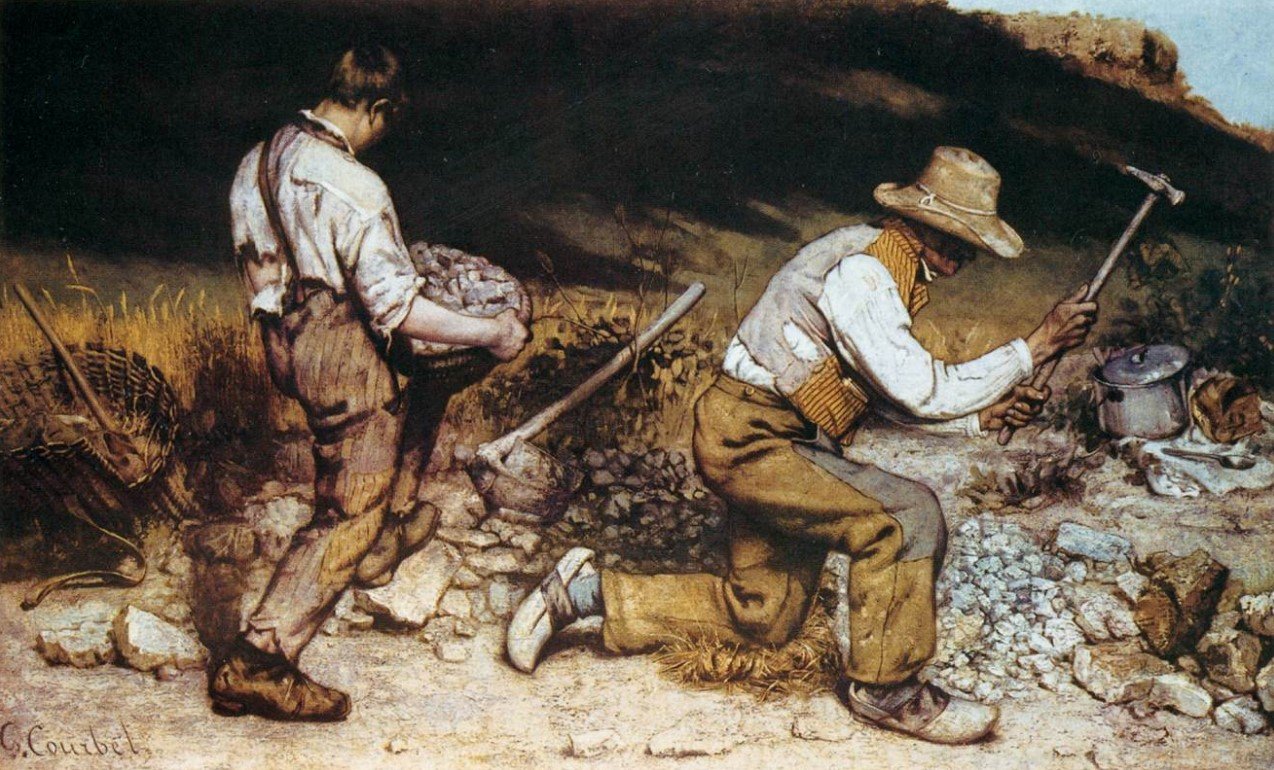
Artist: Gustave Courbet
Year: 1849-1850
Location: Gemäldegalerie Alte Meister (Until-1945)
Dimensions: 4.9 ft × 8.5 ft
Medium: Oil on canvas
Movement: Realism
Buy a reproduction:

The Paris Salon of 1850
Gustave Courbet’s masterpiece, «The Stone Breakers,» made its debut at the Paris Salon in 1850, facing an amalgam of opinions and praise.
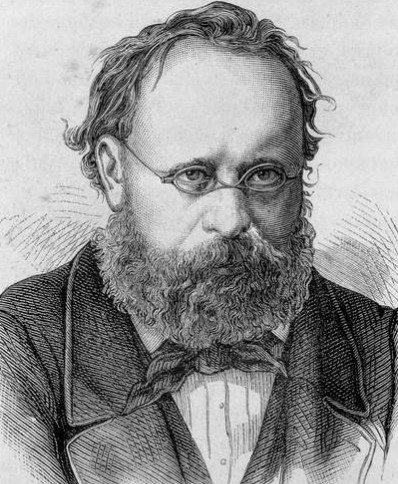
Opinions and Praise
The painting generated controversy among critics. While some disapproved of it as inappropriate for high art, social theorist Pierre-Joseph Proudhon (In photography) praised it as a successful social representation.
Density and Illumination Sparking a Debate
Criticism was also directed at the density of the painting and its lighting. Nevertheless, the duality of opinions at the Paris Salon highlights the ability of «The Stonebreakers» to provoke reflections and debates on the relevance of art in social representation.
A tragedy for art and culture 1945
During the Allied bombing raids in 1945 «World War II», the work was destroyed while being moved to safety along with 155 other paintings. This unfortunate incident deprived the world of a piece that had been praised as a «monumental work» since its exhibition in 1850.
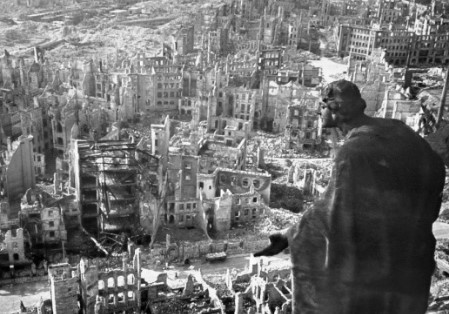
The original painting, which was housed in the Gemäldegalerie Alte Meister in Dresden (In Photography), fell victim to destruction, defeating German efforts to relocate it to a safe site in February 1945.
«The Stonebreakers» It becomes a tragic symbol of the painful consequences of war conflicts, where the loss of valuable artistic expressions adds to the tragedies.
The second version, inverted, survived the war and is in the Oskar Reinhart collection in Winterthur.
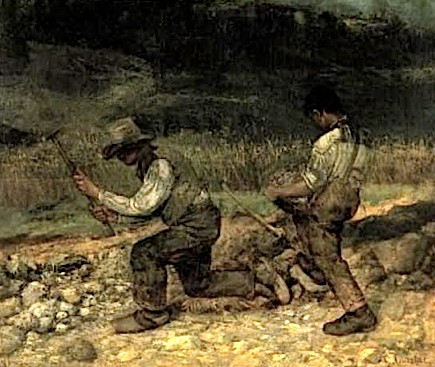
Analysis «The Stonebreakers» Painting
Courbet’s imposing 1.65 m x 2.57 m work emerges as a canvas that captures the stark reality of daily life. Through the depiction of two hustlers, one in youth and the other in old age, both facing the challenge of back-breaking work, painting becomes a powerful medium to convey a powerful emotional narrative.
Visual description
The strategic placement of the two stonecutters against a low hill in «Ornans», the rural French setting where Courbet grew up, reveals the artist’s meticulous intention to contextualize the scene. From the threadbare clothing to the everyday objects strewn on the ground, each element of the scene tells a story of hardship.
Right Side
A worn cloth, a pot, the half-opened case containing bread and a spoon suggest that the workers do not enjoy any respite during their arduous workday.
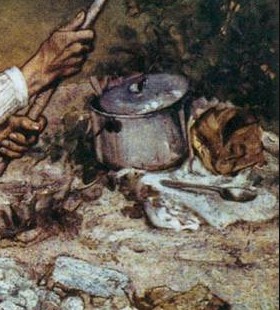
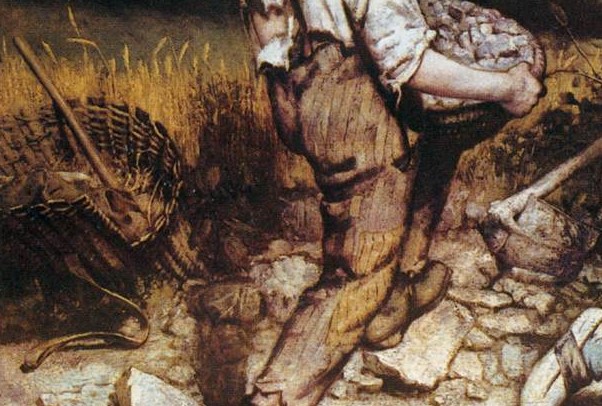
Left side
The presence of a basket for carrying rubble and a scythe among the workers indicates that not only in the task of breaking stones, but also in clearing the land.
Intertwining Struggles
The arrangement guides the viewer’s gaze along the hammer, establishing a visual connection between the efforts of the older stone-cutter and the intensity of the work of the young boy next to him. The latter, a teenager of about 14, evidences signs of the flu as he deals with a constant cough.

Details of Effort
The young man holds a basket of stones, showing the tension in his forearm and his strained muscles. On the other hand, the sunlight and the older stonecutter’s hat add a realistic touch, indicating the hardness of his work under the intense heat.
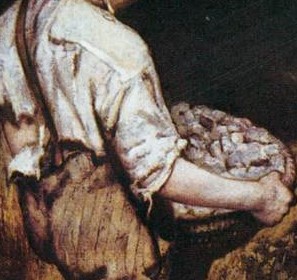
Apparel Details & Coats of Authenticity
The older man’s rough dress, from the linen shirt to the thick pants with patches, and additional details such as the brass tobacco box on his red-striped vest and broken wooden shoe heels, add layers of authenticity.
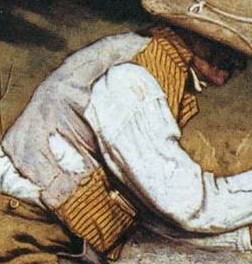
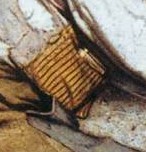
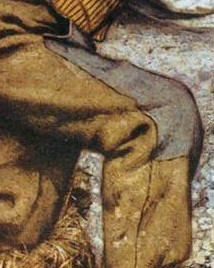
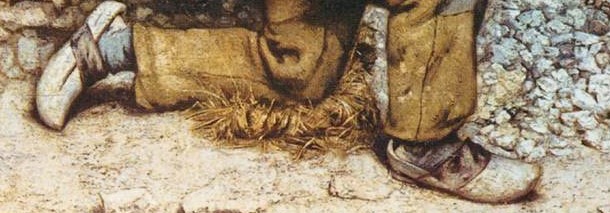
Courbet in «The Stonebreakers» succeeds in conveying to the viewer the complexity and harshness of the lives of these workers, who face obvious adversities.
Technique in «The Stonebreakers» Painting
Gustave Courbet, through his technique in «The Stone Breakers», challenged the canons established by the refined neoclassical style that predominated in the scene of 1848.
Colors & Conscious Criticism of Neoclassical Aesthetics
The brushstrokes employed by the artist represent a conscious rejection of the polished and elegant aesthetic characteristic of the period. In that sense Courbet used few colors, such as browns, with touches of blue/grey and orange, creating a landscape of earthy hues.
Breaking Molds
- By moving away from the conventional and by organizing the composition, aerial perspective and finish, the artist projects that his work feels realistic and different.
- The lack of emphasis on key elements, such as hands and close-ups, detracts from the glamour that predominated in French paintings of the time.
- Courbet, through his innovative technique, manages to convey the harshness of everyday reality, defying the artistic norms of the time.
Different Realities Contrasting Techniques
Unlike artists such as Millet, who chose to depict peasant life in an idealized and positive manner in his paintings, Gustave Courbet took a radical approach by portraying figures dressed in tattered and tattered clothes.
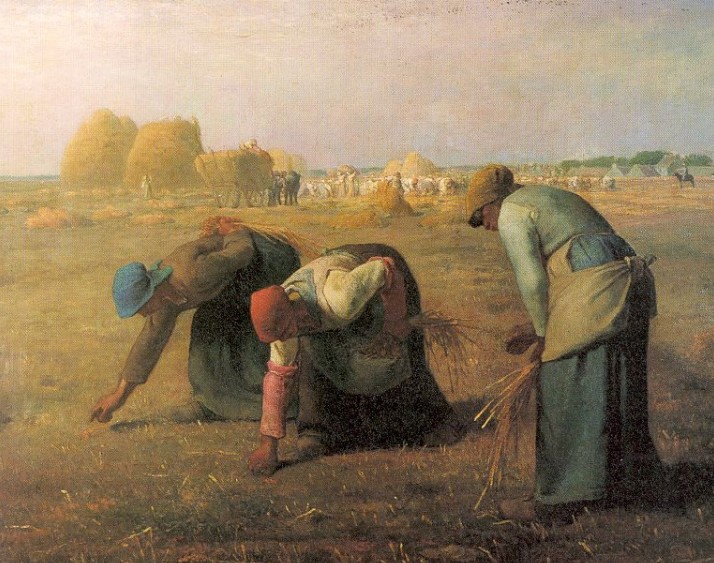
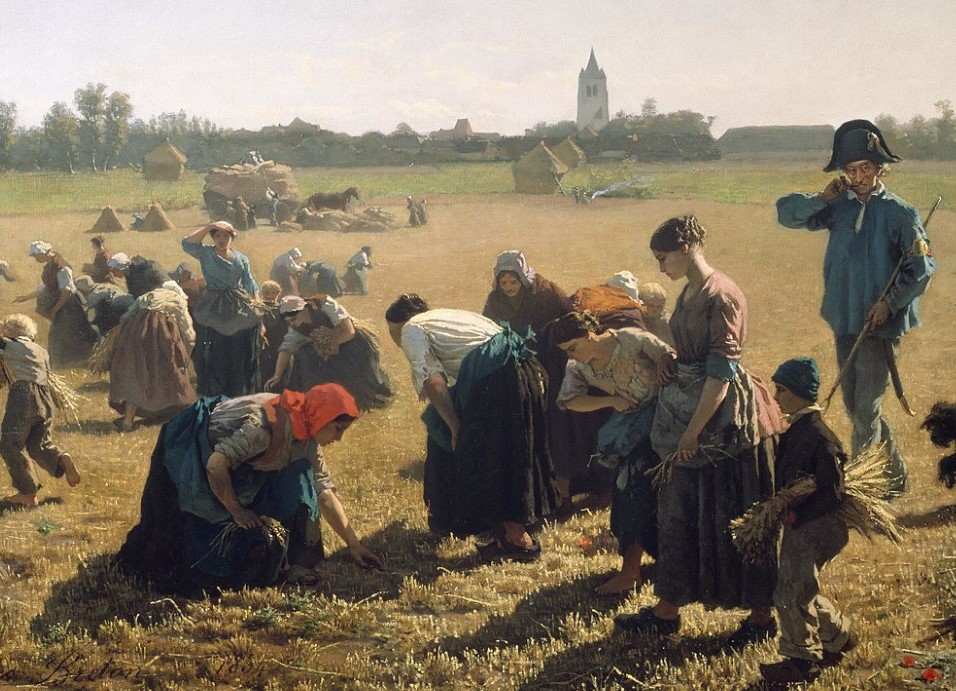
The Meaning «The Stonebreakers»
Depicting an older man and a young man «too young» for the job is interpreted as a deliberate attempt to convey the harsh reality of the abuse and deprivation experienced by the inhabitants of rural French life in the mid-nineteenth century.

Isolation and Marginalization
The visual effect of the hill stretching to the top of the canvas is interpreted as a symbolism of the physical and economic isolation faced by the workers. This aspect reinforces the representation of loneliness and marginalization.
An interesting article for you to read: Cakes 1963 Wayne Thiebaud 》A Sweet Celebration of Art
Dignity and Disdain
Courbet shows a clear sympathy for the workers by portraying them with dignity, while revealing his disdain for the upper class. The work, therefore, is perceived as an expression of social criticism that seeks to highlight the disparities of the time.
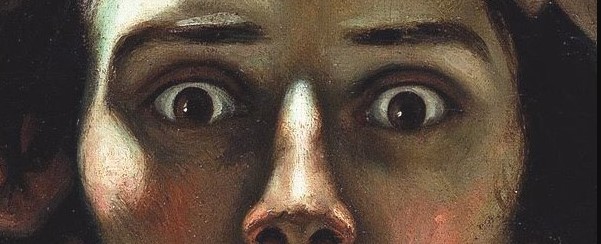
Through outstanding works such as «The Stonebreakers», he became a central figure in the realist movement by sincerely reflecting the history of the workers of the 19th century.
Despite the tragic loss of «The Stonebreakers,» Courbet’s work persists as a powerful reminder of relevance in art.
The duality present in «The Stonebreakers», between criticism and praise, tragedy and survival, highlights the complexity and depth of this painting.
Courbet, although not overtly ideological, contributed significantly to realism, influencing modernist painters such as Cloude Monet.

